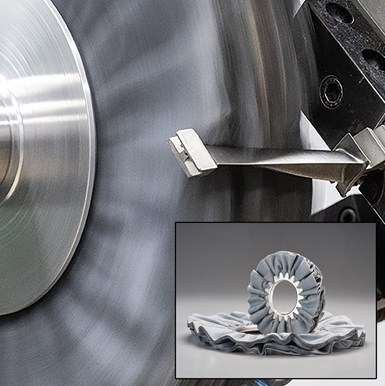Norton buffing wheels use minimal compound to maximize product life
Key applications include automatic or semi-automatic buffing, cut buffing and mush buffing in a range of markets such as automotive, hardware, oil and gas and more.

Norton’s FAB buffing wheels
Saint-Gobain Abrasives’ Norton FAB (fixed abrasive buff) buffing wheels operate with a significantly decreased need for buffing compounds. Their design incorporates abrasive grains into the buffing wheel, resulting in Ra values ranging from 1 to 5 Ra. The wheels are tear-resistant and waterproof, enabling a longer life than traditional cotton buffs, the company says.
The Norton FAB is intended to provide efficient, safe buffing with minimal clean-up. With less compound to purchase, apply and dispose of, costs are minimized and environmental impact is reduced.
A premium silicon carbide abrasive is uniformly applied to both sides of the cloth for a more consistent buffing performance. Norton FAB wheels can be easily incorporated into new or existing robotic buffing applications.
Key applications include automatic or semi-automatic buffing, cut buffing and mush buffing in a range of markets such as automotive, hardware, oil and gas and more. The wheels are effective on hard alloys as well as soft metals such as aluminum and brass. Norton FAB Wheels are available in outer diameters from 5" to 22", in 12 or 16 ply (number of cloth layers of buff), 2 or 4 pack (waviness of the buff face) and various ID hole designs.
Related Content
-
SMC composites progress BinC solar electric vehicles
In an interview with one of Aptera’s co-founders, CW sheds light on the inspiration behind the crowd-funded solar electric vehicle, its body in carbon (BinC) and how composite materials are playing a role in its design.
-
Creating a composite battery insert-stud solution for EV trucks
Bossard worked with an OEM and Tier supplier team to meet tight electrical insulation and packaging tolerances while reducing tooling, molding and assembly costs.
-
Co-molding SMC with braided glass fiber demonstrates truck bed potential
Prepreg co-molding compound by IDI Composites International and A&P Technology enables new geometries and levels of strength and resiliency for automotive, mobility.


